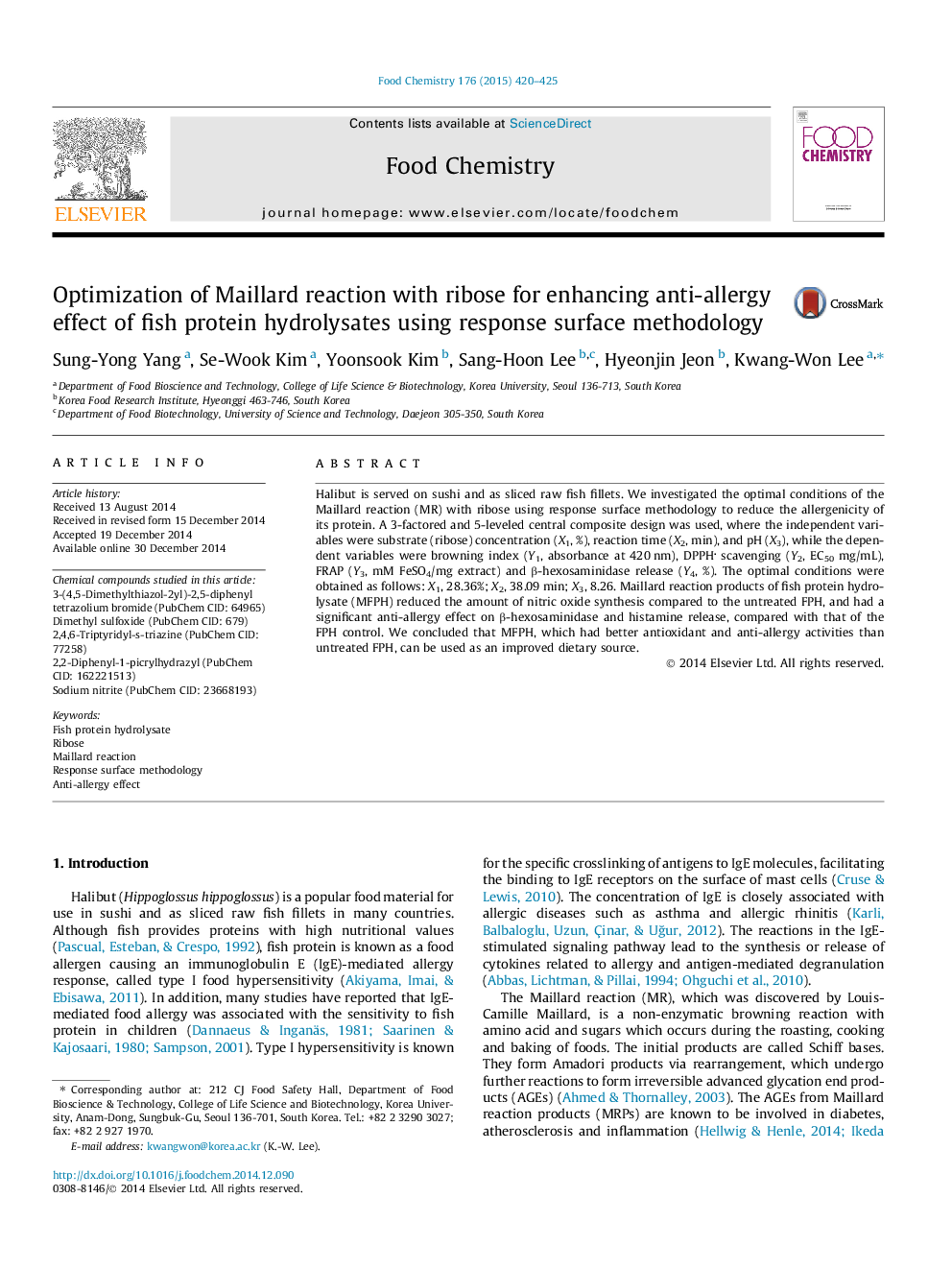| Article ID | Journal | Published Year | Pages | File Type |
|---|---|---|---|---|
| 7593064 | Food Chemistry | 2015 | 6 Pages |
Abstract
Halibut is served on sushi and as sliced raw fish fillets. We investigated the optimal conditions of the Maillard reaction (MR) with ribose using response surface methodology to reduce the allergenicity of its protein. A 3-factored and 5-leveled central composite design was used, where the independent variables were substrate (ribose) concentration (X1, %), reaction time (X2, min), and pH (X3), while the dependent variables were browning index (Y1, absorbance at 420 nm), DPPH scavenging (Y2, EC50 mg/mL), FRAP (Y3, mM FeSO4/mg extract) and β-hexosaminidase release (Y4, %). The optimal conditions were obtained as follows: X1, 28.36%; X2, 38.09 min; X3, 8.26. Maillard reaction products of fish protein hydrolysate (MFPH) reduced the amount of nitric oxide synthesis compared to the untreated FPH, and had a significant anti-allergy effect on β-hexosaminidase and histamine release, compared with that of the FPH control. We concluded that MFPH, which had better antioxidant and anti-allergy activities than untreated FPH, can be used as an improved dietary source.
Keywords
Related Topics
Physical Sciences and Engineering
Chemistry
Analytical Chemistry
Authors
Sung-Yong Yang, Se-Wook Kim, Yoonsook Kim, Sang-Hoon Lee, Hyeonjin Jeon, Kwang-Won Lee,
